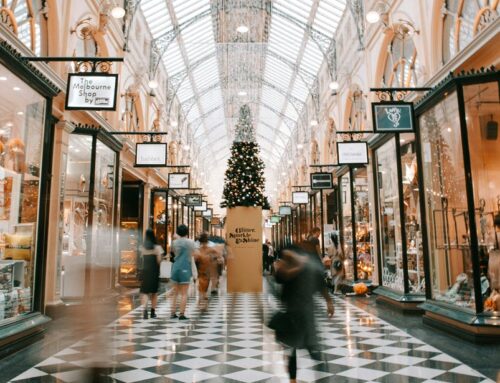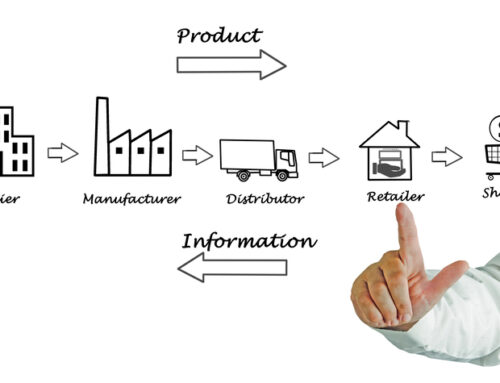Transparency across fashion supply chains is a big hurdle when it comes to understanding where our clothing comes from. Socially conscious consumers are asking “Who made my clothes?” with sincerity beyond a trendy desire to go green; they want to know how clothes are made, whether the materials are recycled or organic, and if those who are making them are paid living wages.
 But the traceability of supply chains may be more difficult than simply putting pressure on clothing makers to be truthful about what goes into their creations. According to a new survey from Serai, conducted with KPMG, “less than half of the 200 companies surveyed have a deep understanding of their supply chains. This lack of transparency makes it impossible to adhere to standards for environmental sustainability and the promotion of human rights.” Further complicating the situation are mid-level producers who obfuscate or deliberately falsify their sources, and audits and checks performed by outside regulators with very little knowledge of actual day-to-day procedures.
But the traceability of supply chains may be more difficult than simply putting pressure on clothing makers to be truthful about what goes into their creations. According to a new survey from Serai, conducted with KPMG, “less than half of the 200 companies surveyed have a deep understanding of their supply chains. This lack of transparency makes it impossible to adhere to standards for environmental sustainability and the promotion of human rights.” Further complicating the situation are mid-level producers who obfuscate or deliberately falsify their sources, and audits and checks performed by outside regulators with very little knowledge of actual day-to-day procedures.
In response to growing concerns, technological innovators have begun fueling solutions to these problems. The emerging tech and resources for brands, producers, and consumers can be broken into four types:
- Shared and curated databases (indexes) of suppliers and data
- Blockchain for storing and sharing said data
- QR or other electronic codes for retrieval and merchandising of backstory;
- Platforms/ecosystems for connecting different companies and data sources.
Highlighted here are few examples of fashion tech that tackle issues of transparency and traceability:
 The Open Apparel Registry allows makers, facilities, and the concerned public to have easy and equal access to information on suppliers. Brands, organizations, and individuals can share what they know about manufacturers in their supply chains, while manufacturers can claim their facilities in the database and provide supportive data which can help to further grow their customer base.
The Open Apparel Registry allows makers, facilities, and the concerned public to have easy and equal access to information on suppliers. Brands, organizations, and individuals can share what they know about manufacturers in their supply chains, while manufacturers can claim their facilities in the database and provide supportive data which can help to further grow their customer base.
Traceability platforms like Textile Genesis assist brands in ensuring the authenticity of sustainable textile products in their supply chain, while organizations like The Worldwide Supply Chain Federation are building a community of multidisciplinary professionals in order to foster a dialogue and drive innovation to improve supply chain related technology. REFASHIOND, a supply chain tech company that focuses on connecting start-ups and entrepreneurs with emergent technologies, is one of the companies that have been born out of this effort. Some, like eRMG, are country specific for local oversight.
QR Codes are one way responsible companies are approaching the transparency problem themselves. When scanned, the digital codes can help brands share information that goes far beyond the limited details that appear on a garment label or tag. QR Tiger assists brands with choosing and implementing QR code solutions for their sustainability campaigns.
 Curious about the brands you buy? Not certain where to start? Fashion Checker is a simple search tool designed for consumers that rates brands on their commitment to paying a living wage. Similarly, Good On You is a consumer-facing database that employs blockchain technology to trace supply chain data for thousands of well-known brands. Their ratings scale includes how the brand performs in relation to its treatment of people, animals, and the environment.
Curious about the brands you buy? Not certain where to start? Fashion Checker is a simple search tool designed for consumers that rates brands on their commitment to paying a living wage. Similarly, Good On You is a consumer-facing database that employs blockchain technology to trace supply chain data for thousands of well-known brands. Their ratings scale includes how the brand performs in relation to its treatment of people, animals, and the environment.
Supply chain transparency alone does not solve the problems of sustainability, environmental safety, and worker’s rights. Shoppers need to put the information to work and use their spending to continue to push for sustainable transformation in the fashion industry. If data doesn’t influence your decisions and foster change, then what will? You can become a “wallet activist” in fashion just like you do with food and transportation choices, and technology is making it easier than ever to participate in solutions.
By the way, at Balodana we do know every one of our makers, and we are working to create even more transparency with them into where they procure their fabric and finishings as components of having a fully transparent pipeline. We’ll keep you posted as we progress!
More Resources:



